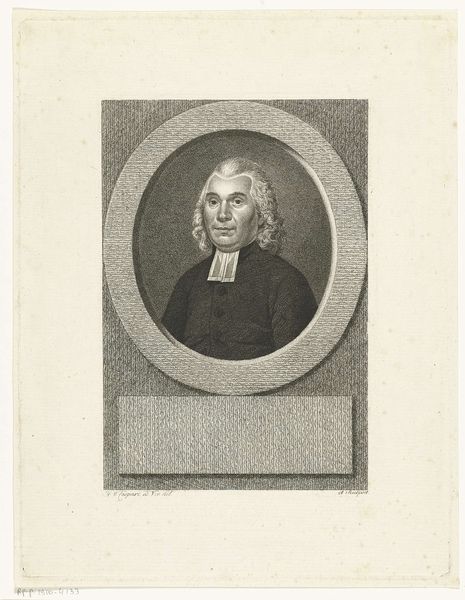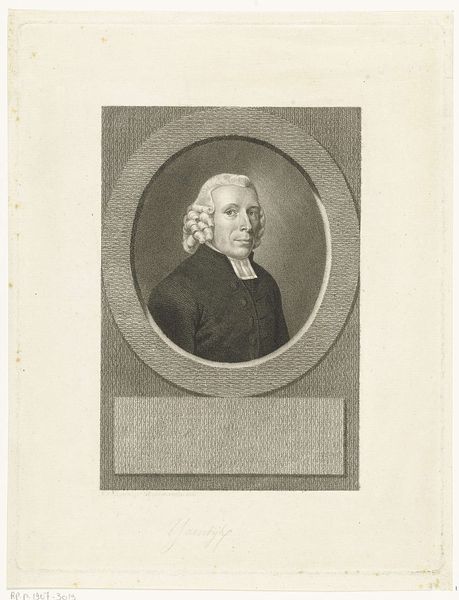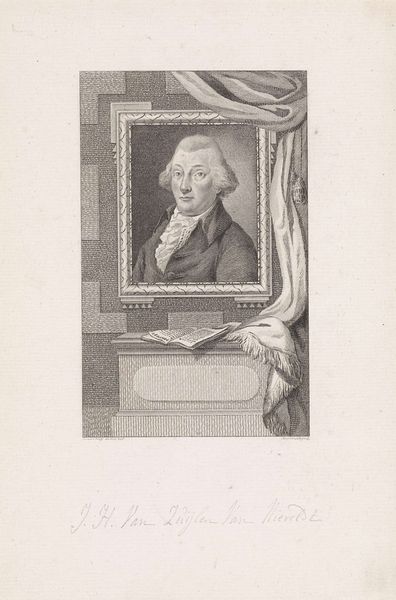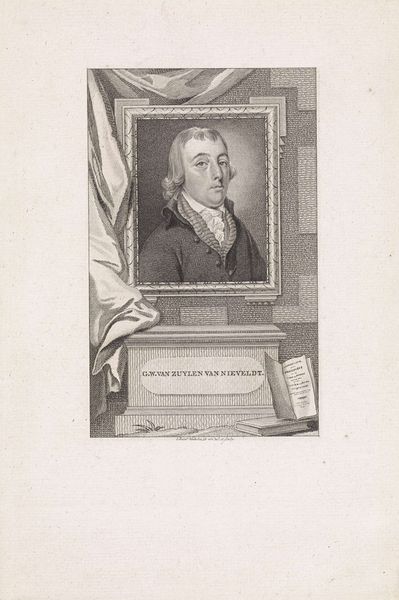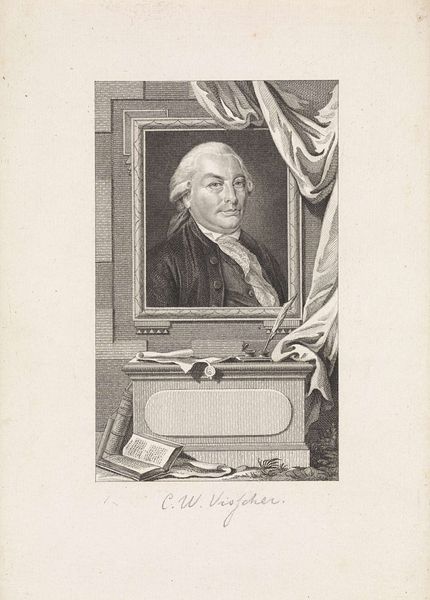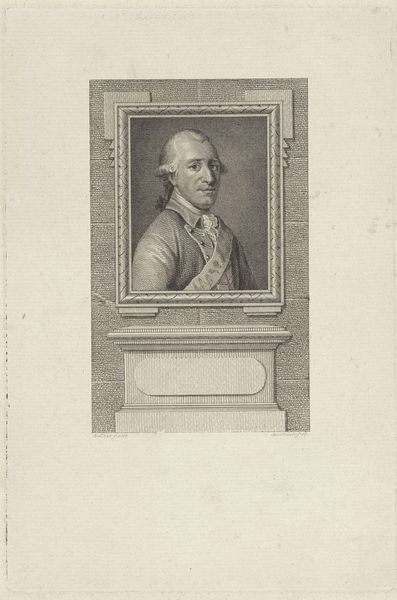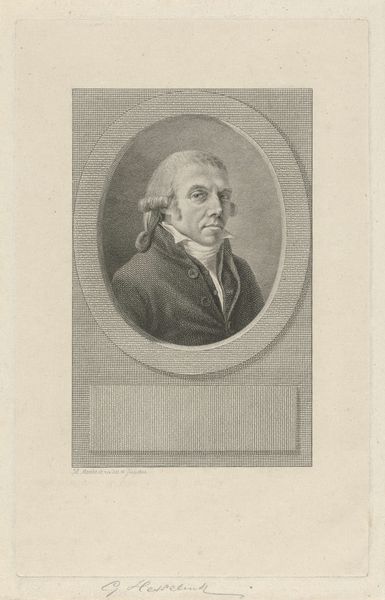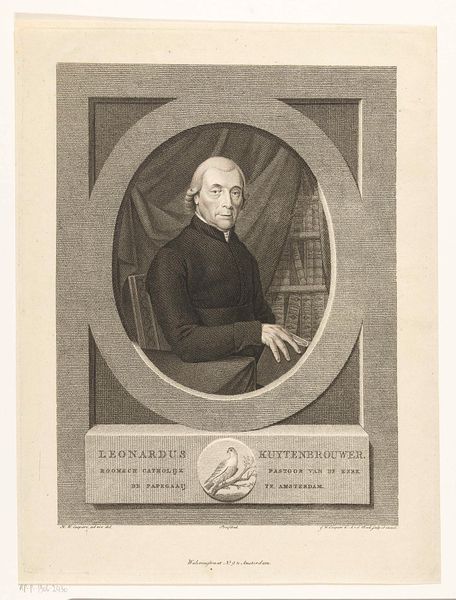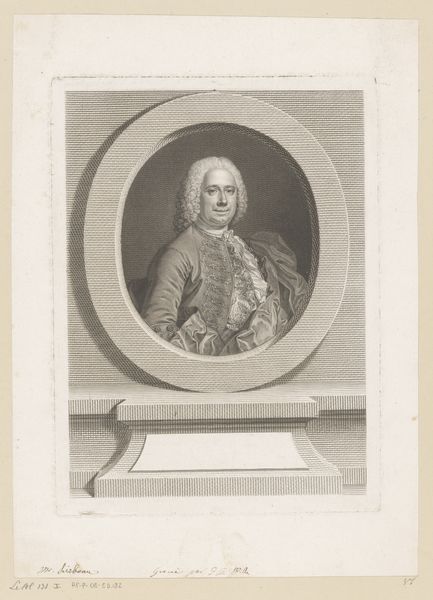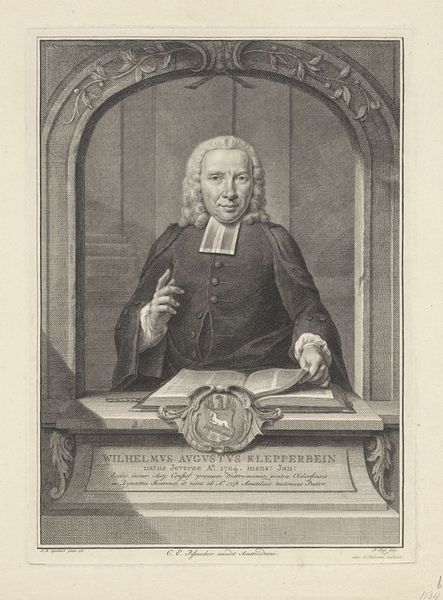
engraving
#
portrait
#
neoclacissism
#
old engraving style
#
history-painting
#
academic-art
#
engraving
Dimensions: height 236 mm, width 155 mm
Copyright: Rijks Museum: Open Domain
Editor: Here we have Reinier Vinkeles' "Portret van Antoni Martini," an engraving dating between 1786 and 1809. The detail achieved through the engraving technique is impressive. What strikes me is how the portrait within a portrait is staged amidst symbols of intellect, but the backdrop and lighting feel flat, almost manufactured. How do you read this piece? Curator: Observe how Vinkeles orchestrates depth. We're not simply looking at a portrait of Martini; we're seeing a carefully constructed composition. The formal elements are paramount. Note the interplay of the textures - the smooth skin of Martini contrasts with the draped fabric and the rigid lines of the books and table. Consider the calculated juxtaposition of geometric forms. How does this layered framing contribute to our understanding? Editor: So, you're saying the setting is integral, not just decorative? Curator: Precisely. The artist isn’t just rendering a likeness; he is presenting us with a symbolic framework. The internal frame focuses our attention. And let us also consider what is excluded: background context, specific clues of time and place. We are left with the portrait itself. How might these formal qualities elevate the sitter, transforming him into an archetype of enlightenment? Editor: It's fascinating to think about how much emphasis is placed on the visual construction of meaning, beyond just the subject itself. Curator: Indeed. Through analyzing the artwork’s formal elements, one can uncover symbolic representations. This portrait provides not only the figure’s semblance but unveils the ideology of the period through structured forms and refined textures. What has stood out for you regarding its materiality? Editor: I now recognize the depth of symbolic presentation accomplished through textures, framed presentation, and geometry. Curator: I’m glad we have appreciated and studied this Neoclassical period piece together.
Comments
No comments
Be the first to comment and join the conversation on the ultimate creative platform.
